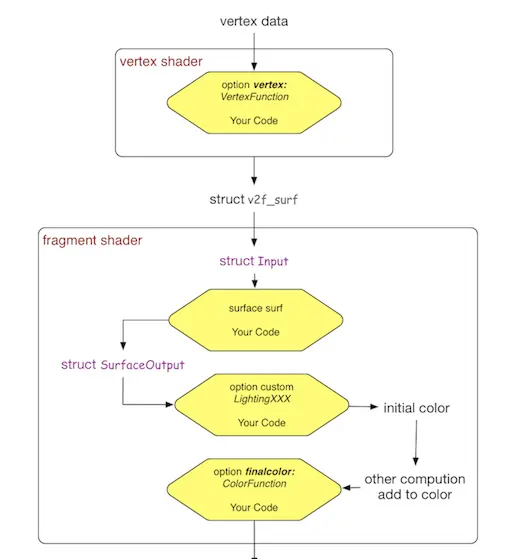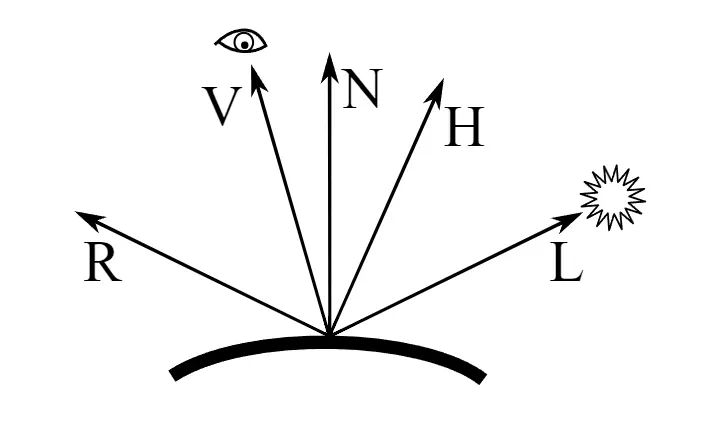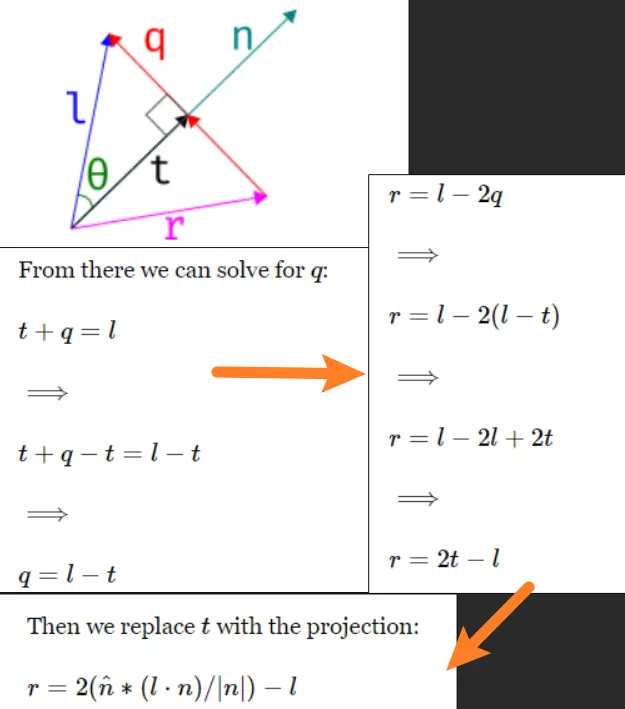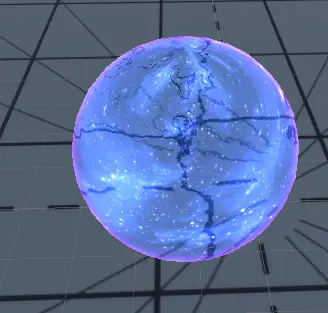Game Engine Shader
基本概念
- Properties中定义的属性,需要在下方SubShader中写出对应的名称。e.g.
Properties
{
_Color ("Color", Color) = (1,1,1,1)
}
...
fixed4 _Color;
Unity - Manual: ShaderLab: defining material properties
- Shader的类型为
#pragma surface surf Standard fullforwardshadows则对应void surf (Input IN, inout SurfaceOutputStandard o)
| Standard | SurfaceOutputStandard | |
| Lambert | SurfaceOutput | |
Unity - Manual: Writing Surface Shaders
- 内置函数的使用
tex2DUnpackNormalsaturate…
- 透明物体Shader的设置
Tags {
"RenderType" = "Transparent"
"Queue" = "Transparent"
"IgnoreProjector" = "True"
}
#pragma surface surf Standard alpha:fade nolighting
Unity - Manual: Writing Surface Shaders
- Unity Shader中的Variables
Unity - Manual: Built-in shader variables
内置变量
_Time…
输入结构
worldNormalviewDir…
- Surface Shader 示例
Unity - Manual: Surface Shader examples
- 一些内置的调用函数与变量
_LightColor0 will be the primary directional light color#pragma surface surf Toon - LightingToon#pragma surface surf SimpleLambert - LightingSimpleLambert#pragma surface surf Phong - LightingPhong#pragma surface surf CustomBlinnPhong - LightingCustomBlinnPhong#pragma surface surf Anisotropic - LightingAnisotropic…
https://docs.unity3d.com/Manual/SL-SurfaceShaderLighting.html
- Unity Surface Shader的管线

Shader效果
Border (Rim Effect) - Silhouette
float border = 1 - (abs(dot(IN.viewDir, IN.worldNormal)));
float alpha = (border * (1 - _DotProduct) + _DotProduct);
o.Alpha = c.a * alpha;
点乘拿到视角边缘的过渡值,然后使用_DotProduct控制边缘的效果强弱
Lambert
half4 LightingSimpleLambert (SurfaceOutput s, half3 lightDir, half atten) {
half NdotL = dot (s.Normal, lightDir);
half4 c;
c.rgb = s.Albedo * _LightColor0.rgb * (NdotL * atten);
c.a = s.Alpha;
return c;
}
void surf (Input IN, inout SurfaceOutput o)
{
o.Albedo = tex2D (_MainTex, IN.uv_MainTex).rgb;
}
模型法线与灯光的点乘
Toon
fixed4 LightingToon (SurfaceOutput s, fixed3 lightDir, fixed atten)
{
half NdotL = dot(s.Normal, lightDir);
NdotL = tex2D(_RampTex, fixed2(NdotL, 0.5));
fixed4 c;
c.rgb = s.Albedo * _LightColor0.rgb * NdotL * atten;
c.a = s.Alpha;
return c;
}
void surf (Input IN, inout SurfaceOutput o)
{
o.Albedo = tex2D(_MainTex, IN.uv_MainTex).rgb;
}
使用了一张ToonRamp贴图,再根据法线与灯光的点乘值来采样这张贴图
Phone Specular
// I = D + S
// D = N·L
// S = (R·V)^p
// R = 2N(N·L) - L
fixed4 LightingPhone(SurfaceOutput s, fixed3 lightDir, half3 viewDir, fixed atten)
{
float NdotL = dot(s.Normal, lightDir);
float3 reflectionVector = normalize(2.0 * s.Normal * NdotL - lightDir);
float spec = pow(max(0, dot(reflectionVector, viewDir)), _SpecPower);
float3 finalSpec = _SpecularColor.rgb * spec;
fixed4 c;
c.rgb = (s.Albedo * LightColor0.rgb * max(0, NdotL) * atten) + (LightColor0.rgb * finalSpec);
c.a = s.Alpha;
return c;
}
void surf (Input IN, inout SurfaceOutput o)
{
fixed4 c = tex2D(_MainTex, IN.uv_MainTex) * _Color;
o.Albedo = c.rgb;
o.Alpha = c.a;
}
Implementing a Phong Shader in Unity - Jan's Place

首先,我们知道投影的计算,但是我们不知

再去计算反射向量,代入投影的值,其中法线一般是unit vertor,所以最终可得r = n * 2(l·n) - l也就是Phone中计算的反射。

3d - How to prove r = n * 2(l·n) - l in specular reflection? - Mathematics Stack Exchange
在LearnOpenGL中,也是一样的,https://learnopengl.com/Lighting/Basic-Lighting,是调用的reflect函数计算的反射方向
vec3 viewDir = normalize(viewPos - FragPos);
vec3 reflectDir = reflect(-lightDir, norm);
float spec = pow(max(dot(viewDir, reflectDir), 0.0), 32); vec3 specular = specularStrength * spec * lightColor;
vec3 result = (ambient + diffuse + specular) * objectColor;
Blinn-Phong
vec3 lightDir = normalize(lightPos - FragPos);
vec3 viewDir = normalize(viewPos - FragPos);
vec3 halfwayDir = normalize(lightDir + viewDir);
float spec = pow(max(dot(normal, halfwayDir), 0.0), shininess);
vec3 specular = lightColor * spec;
与Phong模型思路上是一样的,不过这里用的是halfDir,而没有去计算反射方向。
LearnOpenGL - Advanced Lighting
Anisotropic Specular Shader
Properties{
_MainTint("Diffuse Tint", Color) = (1,1,1,1)
_MainTex("Base(RGB)", 2D) = "white" {}
_SpecularColor("Specular Color", Color) = (1,1,1,1)
_Specular("Specular Amount", Range(0,1)) = 0.5
_SpecPower("Specular Power", Range(0,1)) = 0.5
_AnisoDir("Anisotropic Direction", 2D) = "" {}
_AnisoOffset("Anisotropic Offset", Range(-1,1)) = -0.2
}
struct Input{
float2 uv_MainTex;
float2 uv_AnisoDir;
}
struct SurfaceAnisoOutput{
fixed3 Albedo;
fixed3 Normal;
fixed3 Emission;
fixed3 AnisoDirection;
half Specular;
fixed Gloss;
fixed Alpha;
};
fixed4 LightingAnisotropic(SurfaceAnisoOutput s, fixed3 lightDir, half3 viewDir, fixed atten){
fixed3 halfVector = normalize(normalize(lightDir) + normalize(viewDir));
float NdotL = saturate(dot(s.Normal, lightDir));
// Anisotropic:
//// HdotA is 0 when perpendicular to the Anisotropic normal map, 1 when parallel.
fixed HdotA = dot(normalize(s.Normal + s.AnisoDirection), halfVector);
//// modify the value with sin() so that we get a darker
//// middle highlight and a ring effect based off of the halfVector.
float aniso = max(0, sin(radians((HdotA + _AnisoOffset) * 180)));
// Specular:
//// scale the aniso value by taking it to a power of s.Gloss,
//// then globally decrease its strengthby multiplying it by s.Specular.
float spec = saturate(pow(aniso, s.Gloss * 128) * s.Specular);
fixed4 c;
c.rgb = ((s.Albedo * _LightColor0. rgb * NdotL) + (_LightColor0.rgb * _SpecularColor.rgb * spec)) * atten;
c.a = s.Alpha;
return c;
}
void surf(Input IN, inout SurfaceAnisoOutput o){
half4 c = tex2D(_MainTex, IN.uv_MainTex) * _MainTint;
float3 anisoTex = UnpackNormal(tex2D(_AnisoDir, IN.uv_AnisoDir));
o.AnisoDirection = anisoTex;
o.Specular = _Specular;
o.Gloss = _SpecPower;
o.Albedo = c.rgb;
o.Alpha = c.a;
}
其中最主要的效果来自sin那里,用sin()修改这个值,我们就可以得到一个更暗的中间高光和一个基于halfVector的环形效果。
Shader Programming, Volume 8. Anisotropic Specular Lighting | by Sebastian Monroy | Medium
Wave (Vertices Animation)
void vert(inout appdata_full v, out Input o){
UNITY_INITIALIZE_OUTPUT(Input, o);
float time =_Time * _Speed;
float waveValueA = sin(time + v.vertex.x * _Frequency) * _Amplitude;
v.vertex.xyz = float3(v.vertex.x, v.vertex.y + waveValueA, v.vertex.z);
v.normal = normalize(float3(v.normal.x + waveValueA, v.normal.y, v.normal.z));
o.vertColor.rgb = float3(waveValueA, waveValueA, waveValueA);
}
void surf (Input IN, inout SurfaceOutput o)
{
half4 c = tex2D(_MainTex, IN.uv_MainTex);
float3 tintColor = lerp(_ColorA, _ColorB, IN.vertColor).rgb;
o.Albedo = c.rgb * (tintColor *_tintAmount);
o.Alpha = c.a;
}
sin(pos.x)得到一个振幅波,加到vertex.y的上面。
Snow
fixed4 _Color;
void vert(inout appdata_full v)
{
// Wrong?
// float4 sn = mul(UNITY_MATRIX_IT_MV, _SnowDirection);
float4 sn = _SnowDirection;
if (dot(v.normal, sn.xyz) >= _Snow)
v.vertex.xyz += (sn.xyz + v.normal) * _SnowDepth * _Snow;
}
void surf (Input IN, inout SurfaceOutputStandard o)
{
half4 c = tex2D(_MainTex, IN.uv_MainTex);
o.Normal = UnpackNormal(tex2D(_Bump, IN.uv_Bump));
if (dot(WorldNormalVector(IN, o.Normal), _SnowDirection.xyz) >= _Snow)
o.Albedo = _SnowColor.rgb;
else
o.Albedo = c.rgb * _MainColor;
o.Alpha = 1;
}
通过snowDir与Normal方向点乘与snow的阈值控制哪些区域产生雪,以及在vertex中朝着法线+snowDir的方向偏移顶点位置,来实现一个非常简单的雪的效果。
Parallax

Parallax(视差)是移动当前视角,画面中的效果还是一直朝向摄像机不产生变化,这个效果可以使用AmplifyShaderEditor中的Parallax Node或者把Screen Position作为UV去采样Texture,两者方法都可以使用。
热扭曲:屏幕空间位置 + 采样纹理(使用Panner节点(随时间流动的UV值))
边缘光:Fresnel效果 + 纹理扰动
https://www.bilibili.com/video/BV1YL4y1b7bB/?vd_source=ce02e1fd8ede3b92cc4f879b568541e2